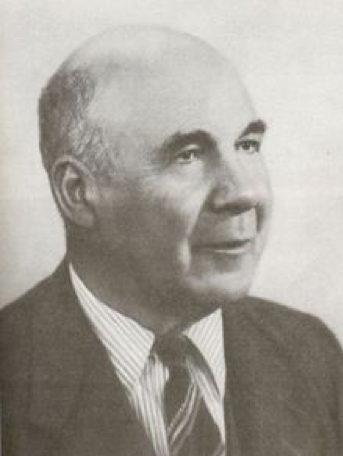In December 1949, Bill Ferguson made this commitment to his people in a political speech:
To all you people of Aboriginal blood, I say … I am fighting for your freedom. Aboriginals still live under laws meant only to control criminals and lunatics: they are not allowed ordinary human rights … I can promise you nothing but the will to work.
Furious at being ignored by both political parties, Bill Ferguson had resigned from the Labor Party to stand as an Independent for Dubbo in the 1949 Federal elections.
But this would be his last public speech. Bill Ferguson collapsed as he left the platform, and he died of hypertensive heart disease a few weeks later in Dubbo Base Hospital on 4 January 1950.
Ferguson had courageous faith in God and a strong voice, and he showed great determination in speaking of the sufferings of his people. This has led people to compare him to the leader of the American Civil Rights Movement, Dr Martin Luther King Jr, who also fought for his people’s rights in the 1950s and 1960s.
Bill Ferguson was born on 24 July 1882 at Waddai, Darlington Point, New South Wales. He was the second of seven children. His father was William Ferguson, a shearer and boundary rider from Scotland, and his mother was Emily Ferguson (née Ford), who was an Indigenous woman who had worked as a housemaid.
Bill’s parents embraced the teachings of Jesus and taught them to their children. Working alongside his non-Indigenous father in the shearing sheds, Bill soon realised that other Indigenous teenage workers were doing the same job as him, but for half the pay. This didn’t fit with Bill’s understanding that ‘all men are equal under God’ and should be treated accordingly. And this is how he began his lifelong career advocating for equality and recognition of the rights of his people.
Bill Ferguson was the son of a Wiradjuri mother. He spoke her language and had a collection of weapons created by Indigenous craftsmen. He talked of his people’s traditions to his children.
On Australia Day 1938, while lots of people were focused on the 150th anniversary of Governor Arthur Phillip’s arrival in Australia with the First Fleet, Bill Ferguson and William Cooper tried to draw attention to the problems of Indigenous people by leading Australia’s first national public civil rights protest, the ‘Day of Mourning’, outside Australia House in Elizabeth Street, Sydney.
This day was born from the despair that Ferguson and Cooper felt after years of trying to draw attention to the many injustices done to Indigenous people.
Bill and his team had spent a long time gathering a vast amount of information about what was happening to his people. He had begun the Aboriginal Progressive Association in Dubbo in 1937, which was one of the organisations that would later become NAIDOC.
Five days after the ‘Day of Mourning’, at Parliament House in Canberra, Prime Minister Joseph Lyons listened as Bill Ferguson, William Cooper and others presented their national aims for the recognition of Aboriginal people’s claims:
We ask you to study the problem from the Aborigines’ point of view … we ask only for justice, decency and fair play. Surely your hearts and minds are not so callused that you will refuse to consider your policy of degrading and humiliating and exterminating old Australia’s Aborigines.
This was rejected.
Bill declared to news reporters:
We must educate the minds of the white people, otherwise the thrusting back of my people which began 150 years ago will continue, until they are swept off the face of the earth!
It was a landmark moment in civil rights history in Australia … and it helped to bring about a slow process of change.
Seventeen years after Bill’s death, his dream was at least partly realised when on 27 May 1967, the highest YES vote ever recorded in a Federal referendum (90.77%) saw section 51(xxvi) of the Australian Constitution changed. This meant that Aboriginal people went from being unrecognised by the Constitution to being included as citizens of their own country.
Bill Ferguson was a man of strong faith and commitment. He wanted to make sure all of God’s people – no matter what their race or background – were treated equally, and he cared deeply about his people right up to his last moments.
Written by Dr Paul Roe.
Resources and further reading:
John Harris, One Blood, Albatross Books, 1990
Australian Dictionary of Biography, ‘Bill Ferguson’ (adb.anu.edu.au/biography/ferguson-william-bill-6160)
National Archives of Australia, ‘Fact sheet 150 – The 1967 Referendum’ (https://www.naa.gov.au/sites/default/files/2020-05/fs-150-the-1967-referendum.pdf)
National Museum of Australia, ‘Collaborating for Indigenous Rights’ (https://www.nma.gov.au/explore/features/indigenous-rights)
Jack Horner, Bill Ferguson: Fighter for Aboriginal Freedom, second edn, published by the author, 1994
Zoe Pollock, ‘Aborigines Progressive Association’, Dictionary of Sydney, 2008 (dictionaryofsydney.org/entry/aborigines_progressive_association)
Anita Heiss, ‘Significant Aboriginal events in Sydney’, Barani (sydneybarani.com.au/sites/significant-aboriginal-events-in-sydney/)

